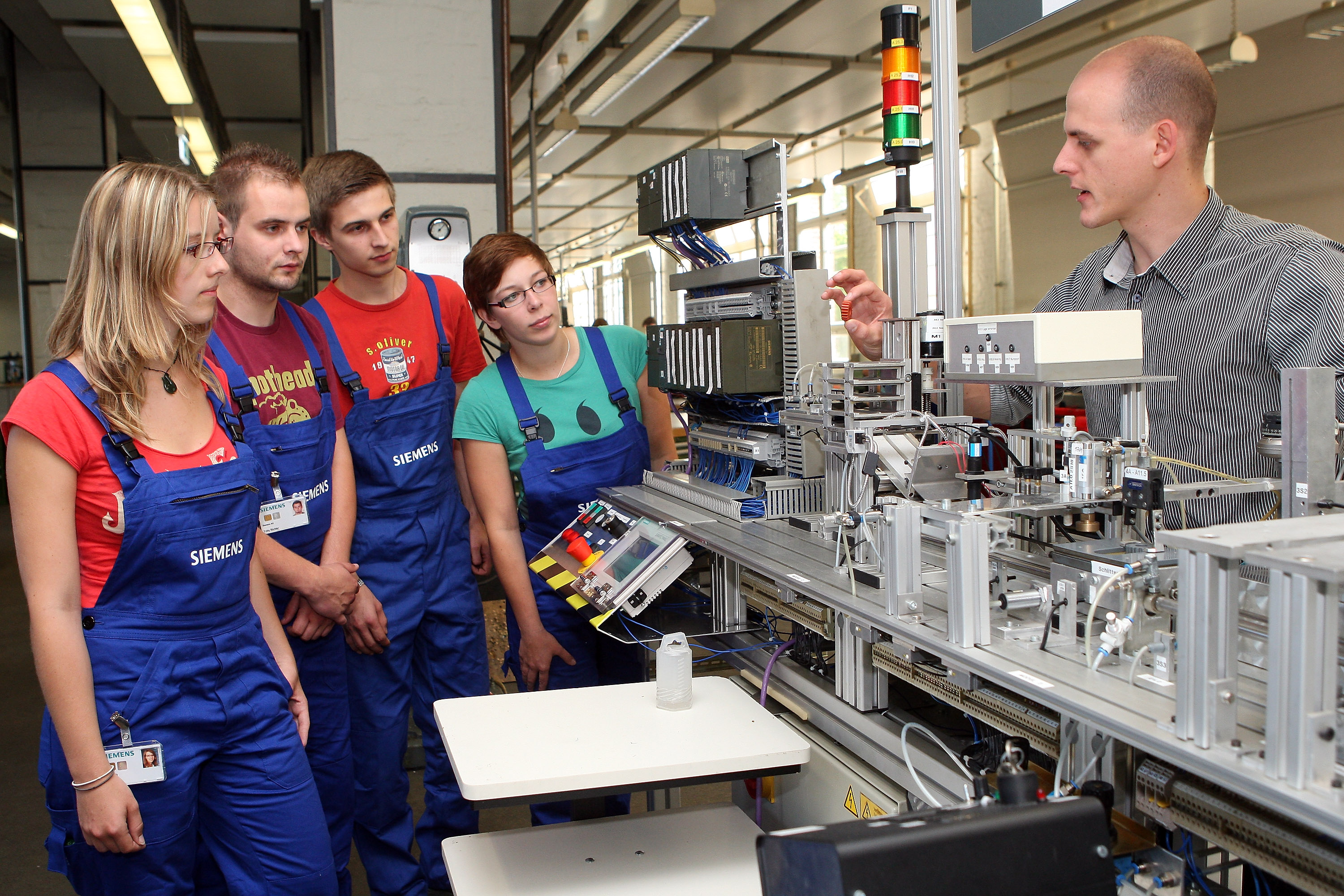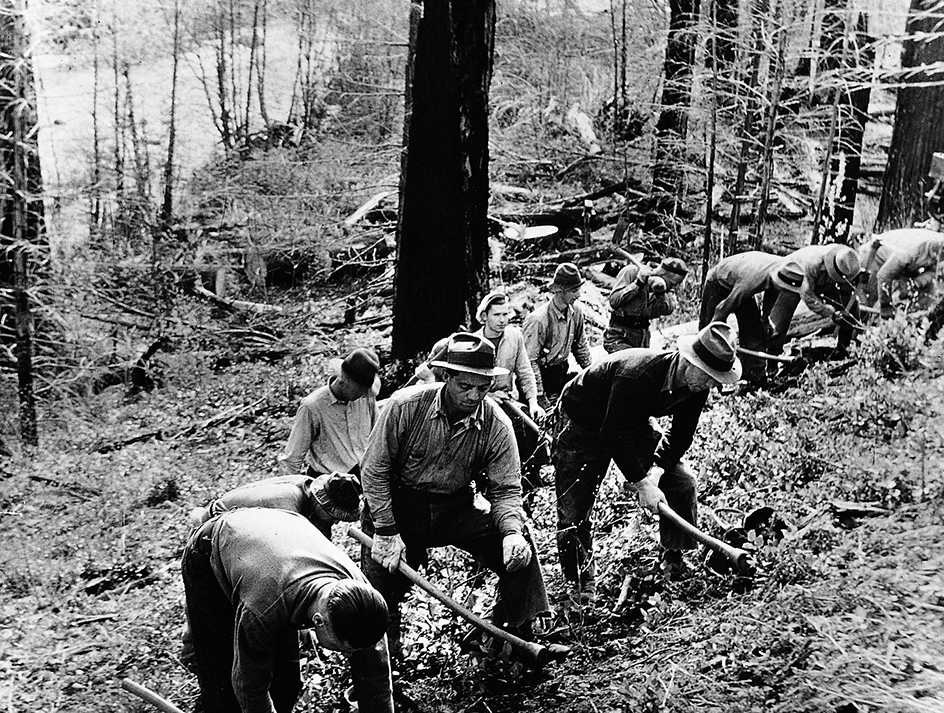Vocational education, also called career and technical education, prepares people for an occupation that does not require a bachelor’s degree. Such education is designed to help meet society’s need for workers. It also gives students more educational and career options. Courses are taught in such subject areas as agriculture, business, computers, family and consumer sciences, health services, technical (mechanical and electronic) fields, and trades and industry. Courses are classified as either exploratory or occupational. Exploratory courses provide an introduction to an occupation or to a number of similar jobs. Occupational courses teach entry-level skills necessary for specific semiskilled, skilled, or technical occupations.

Vocational education forms a part of the process of career education, which helps students choose and prepare for a career. In kindergarten and elementary school, career education provides information about various jobs. It helps children determine their own abilities and interests. In middle school or junior high school, students begin to explore the careers that interest them most. In high school, most students who plan to get a job immediately after graduation take some type of vocational education.
Sources of vocational education
The chief sources of vocational education in the United States are (1) public high schools, (2) proprietary (privately owned) schools, and (3) community and junior colleges. Many business companies, labor unions, the armed forces, and other organizations also provide job training.
Public high schools
are supported by taxes and provide vocational training at little or no charge. They prepare students for careers in agriculture, carpentry, computers, cosmetology (styling hair and makeup), drafting (drawing plans), family and consumer sciences, and other fields. Many high schools, called comprehensive high schools, offer both vocational training and college preparatory programs. Other institutions, known as vocational high schools, specialize in job training. Technical high schools are vocational schools that are specially equipped to teach technical subjects, such as automobile repair and electronics. Many public high schools offer adult-education programs for men and women who want to learn new job skills.

Proprietary schools
include private business colleges, technical institutes, and trade schools. Such schools are owned by individuals or businesses and operate to make a profit. These institutions charge tuition and fees. However, they may offer a greater variety of educational opportunities than public schools. Proprietary schools teach administrative skills, such as filing and record keeping; television repair; and many other subjects. Some schools specialize in training such workers as dental assistants, pilots, or truck drivers.
Community and junior colleges
provide advanced training in engineering-related fields, health services, and many other semiprofessional and technical fields. Students learn such jobs as those of computer specialist, laboratory technician, medical assistant, and pollution control specialist. Most community and junior colleges receive funds from the local or state government. Therefore, the tuition students pay is less than the cost of the instruction.
Other sources.
Labor unions in such skilled trades as bricklaying and plumbing offer apprenticeship programs for their members. Apprenticeships combine on-the-job experience with individual or classroom instruction. Many businesses and industries also conduct training programs for their employees.
Men and women in the armed forces may be trained in a variety of technical jobs. Many of these people later find a market for their skills in civilian life.
The Job Corps program of the federal government provides work training for low-income youths. Another source of vocational education is a revenue-sharing program established by the Workforce Investment Act of 1998. Under this law, state and local governments receive federal funds to furnish job training for unskilled youths and for needy adults.
Vocational teaching methods
Vocational education emphasizes a teaching method known as learning by doing or hands-on practice. Under this method, students learn job skills by practicing them with actual machines or tools. Instruction may take place in a laboratory or in a special classroom called a shop that duplicates a real workplace. For example, students in the automotive department of a high school work on automobiles with the same tools used in repair shops. Such equipment makes vocational education one of the most expensive types of education.
Some vocational schools offer individualized instruction, which enables an individual to study the material at his or her own pace. Students work independently with tape recordings, computer-assisted instruction, and other materials. The teacher gives individual help.
Another method of vocational education combines classroom studies with work experience. In such cooperative education, students attend school part-time and work part-time, usually in a paying job. Businesses and other organizations cooperate with schools in employing the students. A faculty member called a teacher-coordinator helps students obtain jobs that match their field of study. See Cooperative education .
Challenges to vocational education
Some people oppose specialized job training at the high school level. They believe that such instruction takes too much time away from academic education. But some educators argue that many students who have difficulty with academic work become more interested in their studies after they begin vocational education. The students realize that mathematics, reading, and other skills are necessary in their working life.
Some members of minority groups charge that vocational education teaches minority students to aim only for what they consider low-level jobs. Leaders of the women’s rights movement have also demanded reform of vocational programs, which they claim pressure female students into “women’s jobs.” Most female students in vocational training take business, health care, or consumer and homemaking subjects, rather than industrial and trade courses.
History
Vocational education began in ancient times. Parents and other adults taught children how to provide food, build a shelter, and perform other jobs. Through the centuries, the apprenticeship system of training developed. Under this system, a young person learned a craft or trade by working under a skilled master.
Early vocational education in schools.
During the 1800’s, schools began to offer vocational education under such names as manual training and mechanical arts. The Morrill Act of 1862 provided for the establishment of certain colleges and universities to teach agriculture and mechanical arts (see Land-grant university ).
In 1868, a Russian educator named Victor Della Vos designed several courses by which schools could teach skilled trades formerly learned through apprenticeships. Della Vos, the director of the Imperial Technical School in Moscow, established blacksmithing, carpentry, and metal-turning shops there.
Della Vos’s methods spread to the United States in 1876 at the Philadelphia Centennial Exposition. Two American educators, Calvin M. Woodward and John D. Runkle, saw an exhibition of products made by Russian students. In 1880, Woodward opened the Manual Training School in St. Louis, the first school of its kind in the United States. Runkle, the president of the Massachusetts Institute of Technology, established shop courses there modeled on Della Vos’s system.
The 1900’s and early 2000’s.
During the early 1900’s, the U.S. government officially recognized the need for vocational education. For example, the Smith-Hughes Act of 1917 financed job training in high schools. During the Great Depression of the 1930’s, the federal Civilian Conservation Corps provided on-the-job training for unemployed young men.

During World War II (1939-1945), vocational schools operated around the clock to train the millions of workers needed for war production. After the war, a government program called the GI Bill of Rights provided funds for veterans to attend various types of educational institutions. It created a boom for proprietary schools, where veterans learned a variety of skills.
High unemployment during much of the 1960’s and 1970’s brought further government support for vocational education. The Manpower Development and Training Act of 1962 furnished federal funds to train unemployed adults. The Vocational Education Act of 1963 provided money for new buildings, programs, and teacher training. The Economic Opportunity Act of 1964 established the Job Corps. The Vocational Education Amendments of 1968 expanded training opportunities for disabled and low-income people. The Education Amendments of 1976 required schools receiving federal funds to avoid sex discrimination in vocational education. As a result, many automotive, metalworking, plumbing, and other courses became coeducational for the first time.
Two federal acts aiding vocational education passed during the 1980’s, the Job Training Partnership Act of 1982 and the Carl D. Perkins Vocational Education Act of 1984. Both stressed the importance of overcoming sex bias in vocational education classes. These acts also expanded the vocational training opportunities for low-income students.
The Carl D. Perkins Vocational and Technical Education Act of 2006 reauthorized the 1984 Perkins Act. The 2006 act called for replacing the term vocational education with career and technical education. The American Recovery and Reinvestment Act of 2009 funded job training for low-income workers and those who had lost their jobs.
